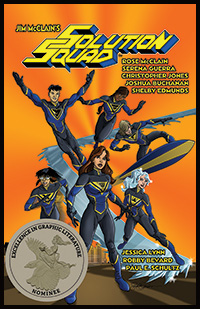I ended my Star Trek Adventures roleplaying game campaign a few weeks ago. The main problem was that I found the Star Trek Adventures game unplayable.
Star Trek Adventures, published by Modiphius, seemed like a cool way to play a Star Trek game at first, but the more I ran it, the less it made sense. The way one completes tasks in the game requires the use of two 20-sided dice. A player adds the appropriate attribute number with their relevant skill number, plus or minus any situational modifiers, and rolls against that number. If they roll at or below that number on either of their dice, each of those rolls is considered a “success.” The gamemaster determines how many successes are required to complete the task and the players must be told that information ahead of time. There are myriad ways to add more dice, re-roll the dice, and achieve critical successes, to the point where it wouldn’t really matter if a player were asked to roll dice at all. This mechanic is good for storytelling, but it’s not great for the type of game where a chance for failure creates drama. Excess successes on the dice provide a game token called Momentum, which could add more dice in later tasks, decreasing even more any chance that the player characters would fail at anything. This begged the question on more than one occasion, “Why are we even rolling dice?”
The game wasn’t all bad. I thought that the “lifepath” method of creating one’s character was good. It reminded me of the FASA Star Trek RPG of the 80s. Having one’s character background inform the character stats adds a layer of depth to the characters that one can play. Another good idea from the game was that of having Supporting Characters for players to play when their main character wouldn’t necessarily be involved in the scenario. If you were playing a helm officer, for example, and the game was focused on the landing party going down to a planet, for example, you could jump in and play Ensign Redshirt. They wouldn’t have the in-depth background of your main character, but they could still play an important role, and maybe even sport a last name! At the very least, they could die a spectacular death, something that Main Characters weren’t supposed to do. The game rules actually mention “plot armor.”
The graphic design of the books was very attractive, but the rules themselves were badly organized. Sometimes you would be reading half a page in on something complicated, only to be interrupted by half a page of flavor text or quotes from one of the many Star Trek shows and movies. And they often weren’t even relevant to what you had been reading!
Another positive to the game was the idea that if you bought the books either directly from Modiphius or a bookseller or game store, they would send you a PDF of the book for free. And since many of the books had black pages with white letters, which is really hard on my eyes, it was a pleasant surprise to find that many of the PDFs had print-friendly versions with white backgrounds and black print. I am particularly pleased about this, because I have the PDFs from the game to use as background information, but now I am ready to sell all the books. I’ll be putting most of them up on Ebay this summer. I am going to keep the boxed starter set (to go with my FASA boxed set), the gamemaster screen, and the Tricorder set with its Original Series-themed rulebook, but the rest of it is going to go, hopefully to someone who will enjoy it more than I did.
“But wait,” you say. “Didn’t you spend a lot of money on your ship and the interiors?”
Yes, I did, but I don’t regret any of it. I will eventually get use out of them, either running an older Star Trek game like FASA, or another diceless game like I wrote about here. Or, I may just use it all to create continuing fan fiction stories and do occasional illustrations. Don’t worry, it won’t go to waste. But for now, I’m putting Star Trek Adventures away, back on the shelf.



